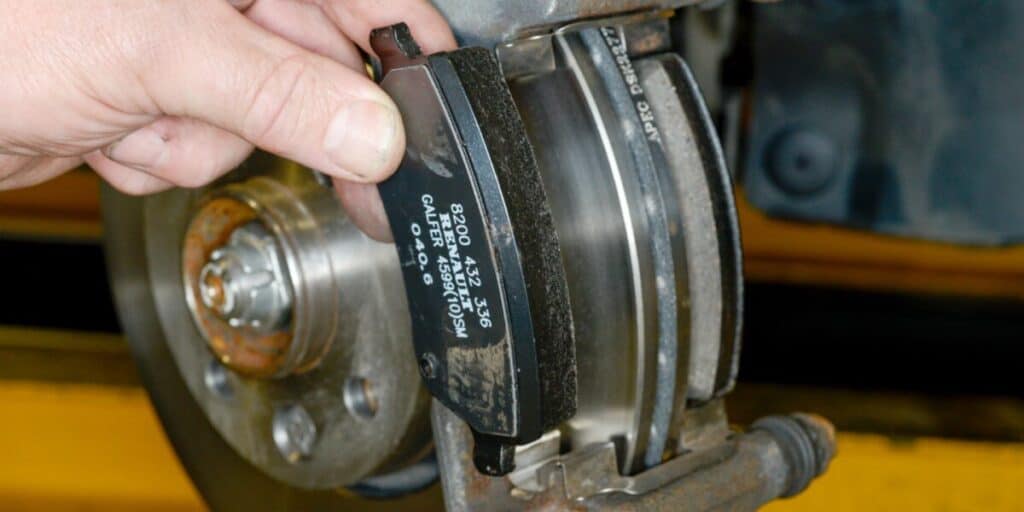There is no one-size-fits-all timeframe when it comes to changing your brake pads. In Canada it is recommended to replace you brake pads on average every 65,000 kms. Generally brake pads can last between 40,000 km and 85,000 km before replacing your brake pads becomes necessary. Many factors come into play, including your driving style, driving terrain, as well as the type of brake pads installed on your car. To ensure your braking system is always in good shape, refer to your user manual. You might also hire an expert mechanic to conduct an inspection service.
Why the brake pads are important
Brake pads are vital components of the braking. Because these pads are subject to wear over the cause of normal use, it’s important to inspect them when you experience any problems with the braking system. If nothing, you’ll have a roadworthy car that’s safe for you, your passengers and other road users. A thorough inspection service will let you know if the brake pads are losing shape and need to be replaced.

9 of the most common causes of brake pad wear
Your car might come with metallic brake pads installed. Some cars run on ceramic, and others have organic or composite brake pad material. Regardless of the type of brake pad in your vehicle, they’ll eventually wear out in the long run and thus lose their ability to generate sufficient friction required to slow down your car. The following are common causes of brake pad wear.
1. Driving style: Your driving habits contribute significantly to the lifespan of your brake pads. If you press hard often and rarely apply the brakes gently, you put more pressure on the brake pads, which will cause faster wear and thus make a replacement service necessary earlier than a driver who applies the brakes gently or stops less often.
2. Traveling distance: Frequent road users will use the brakes more often. So traveling distance will naturally determine when your brake pads are due for a change. Front pads usually experience faster wear since they bear more of the burden required to slow your car to a stop.
3. Driving terrain: You usually slow down when in traffic or driving a rough terrain. This is why cars mostly driven on highways will experience slower brake pad wear than those driven on congested, city roads. If you frequently take on hilly terrains, your brake pads will also be put to more stress and will thus wear faster.
4. Type of Car: Whether you run an automatic or manual transmission car also plays a role. Drivers are able to turn to lower gear instead of braking when driving a manual car. Cars equipped with an automatic transmission system usually put the brakes to more frequent use, and this increase the rate of wear. Also, lighter passenger cars are usually easier to slow down than SUVs and big trucks, which explains why the former undergo slower brake wear.
5. Damaged Caliper: If your brake pads are wearing out unevenly, then there’s a good chance the calipers are bad. The caliper comes with a seal that pulls the caliper piston away from the brake pad when you release the pedal. Since this seal is made of rubber material, it may lose activity and not pull back the piston following pedal release. What follows is consistent build-up of pressure on one brake pad, to the exclusion of others, which facilitates uneven wear on the affected brake pad.
6. Faulty Brake Hose: This occurs if there’s any damage to the metal brake line or rubber brake hose. The resulting effect is increased pressure in the hydraulic system. This may pull away the piston caliper, cause more friction between the brake pad and rotors and thus increase wear on that pad.
7. Damaged Rotors: When you press the pedal, the brake pad presses against the rotors, generating friction that helps to slow down your car. In the event that you install new brake pads while the rotors are damaged, chances are the two won’t work harmoniously, and braking performance will be impeded. Worn rotors generally have deep grooves in them, which can act on the new pad, causing the latter to wear faster whenever it presses against the damaged rotor.
8. Type of Brake Pad: There are metallic, semi-metallic, organic, and synthetic/ceramic brake pads, each with their merits and demerits. Metallic and semi-metallic pads are usually less expensive. Ceramic pads perform best and would make a good choice. Semi-metallic pads might not be as excellent but they last longer. Advances in car development have virtually rendered metallic brake pads in disuse.
9. The Brake Fluid: Brake fluid rarely comes as a foremost consideration when it comes to brake pad life. However, to extend the use-time of your pads, and especially if you use an old car, it’s a good practice to routinely have a brake fluid maintenance service to ensure the entire braking system works as it should.
10. Brake pad hardness: There are different compounds of brake pads. Hard types are built for performance cars and usually last longer than soft compound brake pads. The latter types are suitable for low-speed driving. When exposed to excess heat, the brake pad compound can melt onto the rotors, ultimately affecting performance and faster brake pad wear.
To ensure your car remains safe and roadworthy, problems with the braking system should not go unattended. If you detect a drop in braking performance or suspect your brake pads are worn, it’s time to seek help. One of our expert mobile mechanics will inspect your braking system at the comfort of you home and let you know if any necessary repairs are needed to ensure your car’s braking system performs to standards.
